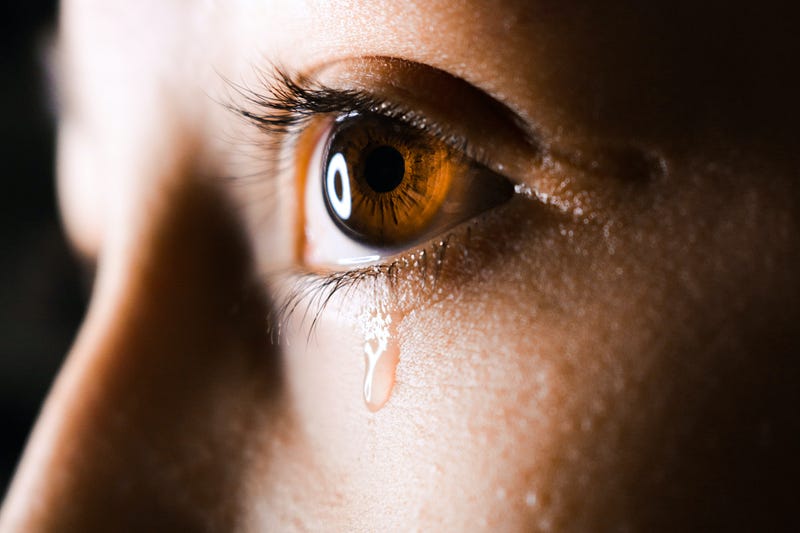Your Emotions Manifest in Your Tears: Understanding Their Chemistry
Written on
Chapter 1: The Nature of Tears
Have you ever considered that tears can serve as a form of emotional release? While they may not predict the future, they certainly help alleviate overwhelming feelings. Nowadays, I find myself crying more easily. A mere mention of a dying animal in a comic on Instagram can bring tears to my eyes. I often scroll past those posts quickly, but by the time I reach a lighter one, my eyes are already glistening. Additionally, I deal with mental health challenges that can lead to significant crying spells. Recently, while feeling down and crying alone in my closet, I recalled a post on Tumblr discussing the different types of tears.
One user claimed that tears arising from various emotions have distinct structures. This piqued my curiosity, prompting me to investigate further. The photographs featured in that Tumblr post were taken by photographer Rose-Lynn Fisher. In her project titled "Topography of Tears," she showcased her own dried tears, revealing the unique structures formed by different emotional triggers. I highly recommend checking out the link to view those captivating images. A Smithsonian article discussing this project delved into the science behind the various types of tears.
Humans produce three primary types of tears: basal, reflex, and psychic. Basal tears are the constant, lubricating tears that keep your eyes moist. Reflex tears, on the other hand, are triggered by irritants like dirt or the pungency of onions. (Interestingly, all tears have layers! They consist of mucus, water, and oils, along with enzymes and electrolytes.) Lastly, psychic tears, the third type, contain additional substances.
These emotional tears are released during moments of intense feelings—whether joyous or sorrowful—and during experiences of significant pain. Notably, psychic tears also contain hormones, including prolactin, adrenocorticotropic hormone, and leucine enkephalin. Prolactin is associated with milk production, while the adrenocorticotropic hormone plays a role in our stress response. You might be unfamiliar with leucine enkephalin, which is thought to act as a natural painkiller and supports homeostasis. Perhaps this explains why we often feel relieved after a good cry; this hormone is unique to psychic, or emotional, tears.
Interestingly, psychic tears can also emerge during empathetic moments because the same brain regions activate when we witness others cry as when we ourselves shed tears. Researchers have yet to identify this empathetic crying in other species, suggesting it's a uniquely human trait linked to our frontal lobe.
So why share this newfound understanding? I want to emphasize that crying is perfectly natural. Even as we navigate challenging times, whether globally or nationally (I am writing from the U.S.), emotional experiences will continue to arise. These can range from joyous occasions, like welcoming a new child, to heart-wrenching events, such as losing a beloved pet.
In those moments, you might feel a tightening in your throat and a lump forming. Your eyes may well up (beyond the basal tears we discussed), and you might feel inclined to suppress those feelings. Resist that urge. It’s healthier to express emotions in the way our bodies naturally respond than to bottle them up. Remember, crying is beneficial for you.
Section 1.1: The Emotional Chemistry of Tears
Tears are not just water; they contain a variety of chemicals that contribute to our emotional well-being. Understanding this chemistry can enhance our appreciation for this natural response.
Subsection 1.1.1: The Structure of Tears

Photo by Aliyah Jamous on Unsplash
Chapter 2: The Science of Tears
The first video, "Why do we have tears when we cry?" delves into the biological and emotional reasons behind our tears, exploring their significance in human experience.
The second video, "The Science of Tears," provides insights into the different types of tears and their unique properties, shedding light on this fascinating subject.